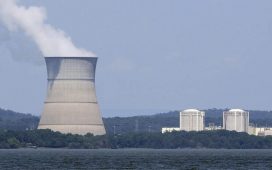Now that US President Donald Trump’s tariff war is in full swing, investors around the world are asking: what’s next on his agenda for upending the global economic order? Many are turning their attention to the “Mar-a-Lago Accord” – a plan proposed by Stephen Miran, chair of Trump’s Council of Economic Advisers, to coordinate with America’s trading partners to weaken the dollar.
At the heart of the plan is the notion that the dollar’s status as the world’s reserve currency is not a privilege but a costly burden that has played a major role in the deindustrialisation of the American economy. The global demand for dollars, the argument goes, drives up its value, making US-made goods more expensive than imports. That, in turn, leads to persistent trade deficits and incentivises US manufacturers to move production overseas, taking jobs with them.
Is there any truth to this narrative? The answer is yes and no. It’s certainly plausible that foreign investors eager to hold US stocks, bonds, and real estate could generate a steady flow of capital into the United States, fuelling domestic consumption and boosting demand for tradable goods such as cars and non-tradables such as real estate and restaurants. Higher demand for non-tradable goods, in particular, tends to push up the dollar’s value, making imports more attractive to American consumers, just as Miran suggests.
But this logic also overlooks crucial details. While the dollar’s reserve-currency status drives up demand for Treasuries (Treasury bills, Treasury bonds, and Treasury notes), it does not necessarily increase demand for all US assets. Asian central banks, for example, hold trillions of dollars in Treasury bills, to help stabilise their exchange rates and maintain a financial buffer in the event of a crisis. They generally avoid other types of US assets, such as equities and real estate, since these do not serve the same policy objectives.
This means that if foreign countries simply need to accumulate Treasury bills, they don’t have to run trade surpluses to obtain them. The necessary funds can also be raised by selling existing foreign assets such as stocks, real estate, and factories.
That is precisely what happened in the 1960s through the mid-1970s. By then, the dollar had firmly established itself as the global reserve currency, yet the US was almost always running a current account surplus – not a deficit. Foreign investors were accumulating US Treasuries, while American firms expanded abroad by acquiring foreign production facilities, either through direct purchases or “greenfield” investments, in which they built factories from the ground up.
The postwar era was hardly the only time when the country issuing the world’s reserve currency ran a current account surplus. The British pound was the undisputed global reserve currency from the end of the Napoleonic wars in the early 1800s until the outbreak of the first world war in 1914. Throughout that period, the UK generally ran external surpluses, bolstered by high returns on investments across its colonial empire.
There is another way to interpret the US current account deficit that helps explain why the relationship between the exchange rate and trade imbalances is more complicated than Miran’s theory suggests. In accounting terms, a country’s current account surplus equals the difference between national savings and investment by the government and the private sector. Importantly, “investment” here refers to physical assets such as factories, housing, infrastructure, and equipment – not financial instruments.
When viewed through this lens, it is clear that the current account deficit is influenced not just by the exchange rate but by anything that affects the balance between national saving and investment. In 2024, the US fiscal deficit was 6.4% of GDP, significantly larger than the current account deficit, which was under 4% of GDP.
While closing the fiscal deficit would not automatically eliminate the current account deficit – that would depend on how the gap is closed and how the private sector responds – it is a far more straightforward fix than launching a trade war. Reducing the fiscal deficit would, however, involve the difficult political task of convincing Congress to pass more responsible tax and spending bills. And unlike a high-profile trade confrontation, it wouldn’t cause foreign leaders to curry favour with Trump; instead, it would shift media attention back to domestic politics and congressional negotiations.
Another key factor behind the current account deficit is the strength of the American economy, which has been by far the most dynamic among the world’s major players in recent years. This has made US businesses particularly attractive to investors. Even manufacturing has grown as a share of GDP. The reason employment has not kept pace is that modern factories are highly automated.
after newsletter promotion
Miran’s plan, clever as it might be, is based on a flawed diagnosis. While the dollar’s role as the world’s leading reserve currency plays a part, it is just one of many factors contributing to America’s persistent trade deficits. And if the trade deficit has many causes, the idea that tariffs can be a cure-all is dubious at best.
Kenneth Rogoff is professor of economics and public policy at Harvard University. He was the IMF’s chief economist from 2001-03.








